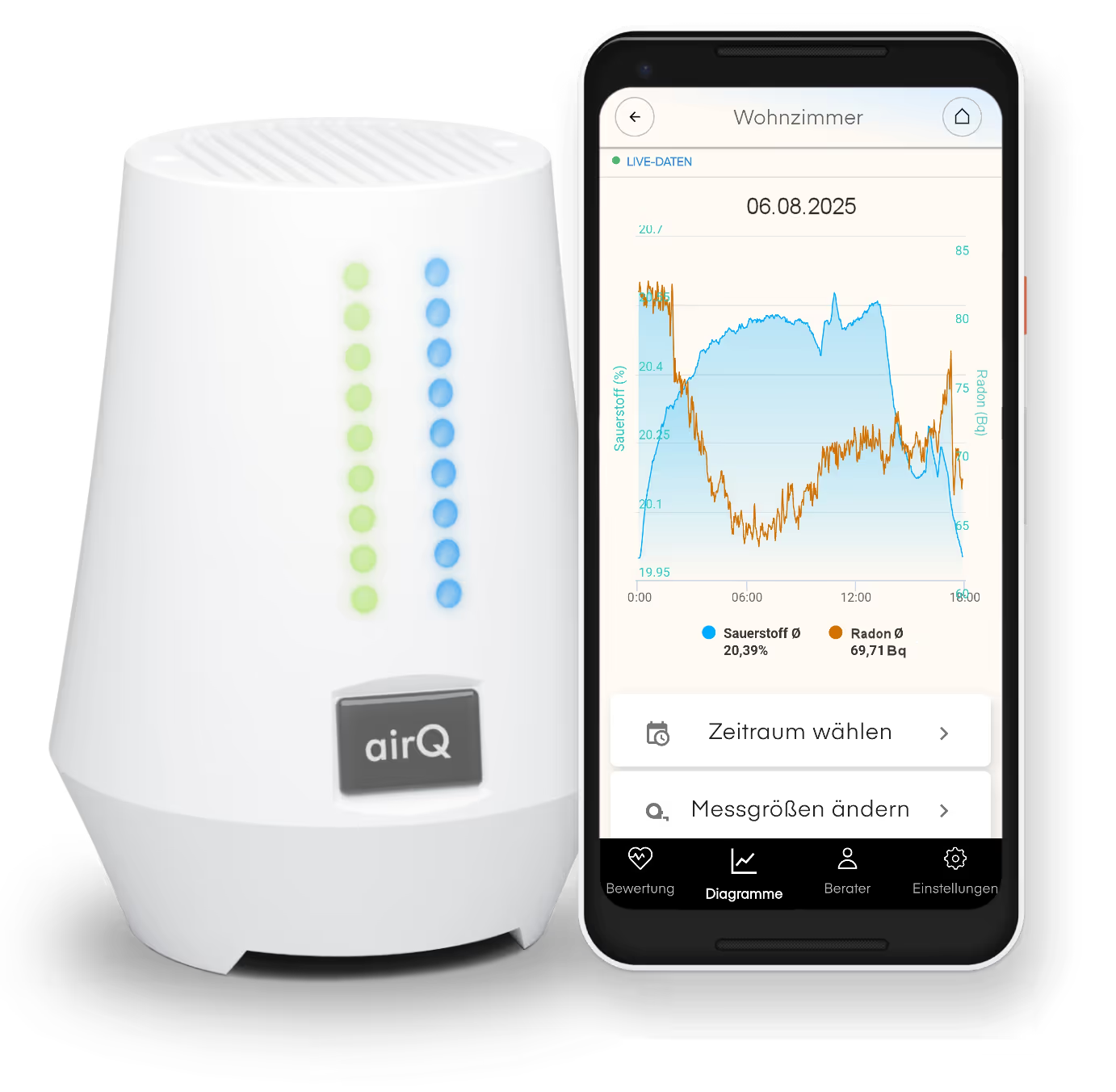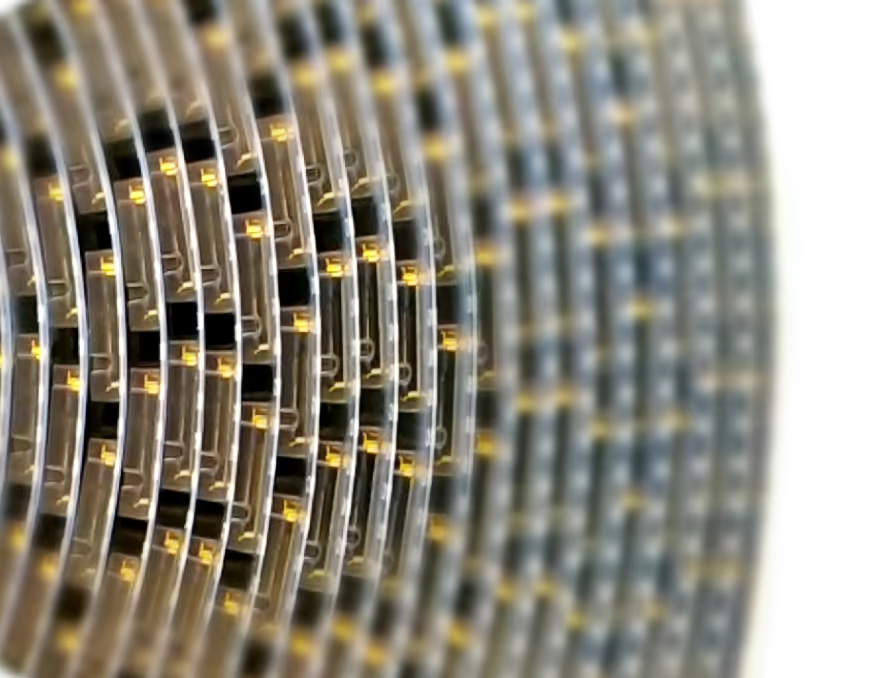a. Speed and accuracy of the measurement vs. size of the sensor
One becquerel means one radioactive decay event per second. The usual unit of measurement is Becquerel per cubic meter - the Federal Office for Radiation Protection specifies a limit value of 300 Bq/m³. Radon measuring devices are usually much more compact and even transportable so that measurements are taken in a much smaller volume than 1 cubic meter (1 x 1 x 1 meter cube) - e.g. 200 cm³ (0.0002 m³). If you want to measure with a sensor with a small measuring chamber, the response behavior, the measuring resolution and the accuracy decrease accordingly. The challenge is to develop a measuring chamber or measuring method with which a high-quality and comparable real-time measurement is possible. We therefore opted for a relatively large chamber for the air-Q Radon. In addition, the measuring module works with optimized passive ventilation of the measuring chamber in order to be able to deliver measured values in a relatively short time that also react quickly to environmental conditions such as ventilation.
To illustrate how many decays have to be measured per measurement volume, we have created an overview here. For example, 50 Bq/m³ corresponds to 3,000 radioactive decays per cubic meter and only 0.6 decays per minute.
b.Averaging algorithm required for measurement in small volumes
Radioactive decays are statistical processes. There is therefore a certain probability of a decay event. At low Radon exposure, one radioactive decay more or less in a small measurement volume can mean a multiplication / halving of the measured value (and thus a possible over- or underestimation of the actual Radon exposure). Therefore, an averaging mechanism is necessary to obtain a continuous measurement curve. At the same time, averaging leads to poorer response behavior. A sophisticated mechanism is therefore necessary. An adapted Kalman filter was used for the air-Q Radon.
The air-Q Kalman filter helps to calculate the most accurate estimates possible from just a few measuring points. It combines past values and trends with current measured values. Each new measurement is used to improve the previous estimate. The filter works step by step and continuously updates its estimate with each new piece of information.
c. Measuring radon and thoron
Most radon measuring devices are designed / calibrated for radon 222. It is the most frequently occurring radon isotope and therefore the greatest health hazard in practice.
Building materials that may contain thorium may emit thoron (radon 220). These include, for example, clay plaster, pumice, natural gypsum, tuff or fly ash cement. Thoron escapes from the surface and decays extremely quickly due to its short half-life (55 seconds). As a result, it can only move a few centimetres away from the material during this time and can only be measured in the immediate vicinity of the building materials mentioned. With the air-Q Radon measuring module, Radon 222 and Radon 220 cannot be distinguished and are output as the measured value Radon.





















